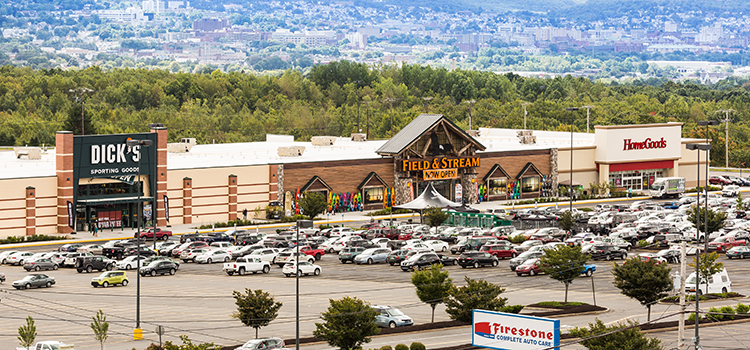Repositioning malls to be more experiential and diversify their offerings has been a big part of PREIT’s strategy for increasing traffic and making its properties more relevant to customers. By paying close attention to surrounding areas and demographics, PREIT has been able to craft experiences that are relevant to each location. Here we talk with CEO Joseph Coradino about PREIT’s strategy and how it has been able to better serve customers with retail, dining and other experiences.
PREIT has been at the forefront of repositioning anchor tenants at malls over the last year. What types of stores are attracting customers?
Our strategy is focused on redefining the mall experience, and repositioning anchor tenants plays a critical role in creating a unique and differentiated destination for shoppers. By making strategic decisions based on evolving conditions in the retail industry and consumer behaviors, we’ve leveraged anchor stores as opportunities to diversify our offerings with curated retail and social experiences that are evolving the concept of the mall.
Today’s mall model blends in-demand tenants across retail, dining and entertainment, shifting traditional shopping centers to lifestyle and tourism destinations. Off-price is one of the hottest segments among consumers, offering a thrill-of-the-hunt experience with rapidly rotating and limited inventory. The health and wellness sector is undergoing explosive growth, with boutique gyms, spas and salons providing an opportunity for personal wellness time alongside shopping and dining. With the growing consumer demand for social experiences, malls are delivering with an uptick in experiential offerings from fast-casual dining to escape rooms to arcades and beyond. It’s ultimately the curation of these concepts that will attract shoppers to a refreshed mall environment.
What are geographic and demographic considerations to consider when replacing tenants or adding new ones?
The demographic and psychographic profiles of our properties’ communities are key considerations in our portfolio management strategy, including remerchandising. It’s not simply about adding a new tenant; it’s about identifying and securing the right tenant that will meet the needs and demands of the shoppers in each of our regions. Understanding the demographic makeup and competitive landscape fuel the evaluation of the tenancy. Our smaller portfolio has allowed us to understand the markets we’re operating in and provided an opportunity to successfully differentiate our properties. In some cases, we’re differentiating from our own assets.
There’s a shift in properties to become entertainment destinations. What mix should malls target so they appeal to all types of customers?
There’s no one-size-fits-all tenant ratio. Each property should reflect a balance of retail, dining and entertainment offerings that appeals to its surrounding market. Across PREIT’s portfolio, apparel tenants make up less than 37% of occupied space, with dining and entertainment coming in at 20% and growing. But at Plymouth Meeting Mall, nearly 50% of space is dedicated to dining and entertainment – demonstrating the quick evolution of that market and PREIT’s efficiency in innovating the property at a rapid pace.
What new and innovative concepts are becoming more popular at malls?
With a growing consumer demand for experiences, concepts that can’t be replicated online are increasing in popularity – such as those that offer an opportunity to socialize or hunt for an exclusive item. Of the space we leased in 2017, nearly half was committed to a mix of tenants offering these unique experiences: dining and entertainment accounted for 19%, while off-price and fitness accounted for 14% and 9%, respectively.
Similar to blending a mix of retail offerings, malls must also curate a diverse range of dining options – including quickservice, sit-down dining, and food kiosks – to accommodate the varied needs of consumers. Beyond dining, grocery stores are also modernizing the mall environment, creating a convenient, one-stop-shop for all shopping needs in one location.
How can companies get ahead of consumer trends in order to remain competitive for the long term?
Trends are set by consumers, so the foundation of any property management program should be rooted in understanding your consumer. Mall owners and retailers need to know the market, analyze sales data and consider historical retail trends. It’s also imperative to look at how technology is changing the world around us and forecast how we can leverage it to truly optimize the shopper experience and continually drive demand.
Joseph F. Coradino has been Chief Executive Officer of PREIT, a publicly traded New York Stock Exchange company (PEI), since 2012 and Chairman of the Board since 2016. PREIT owns and manages a portfolio comprising over 20 million square feet of retail properties, primarily shopping malls, with a concentration in two top 10 MSA markets, Greater Philadelphia and Washington, D.C.
PREIT (NYSE:PEI) is a publicly traded real estate investment trust that owns and manages quality properties in compelling markets. PREIT’s robust portfolio of carefully curated retail and lifestyle offerings mixed with destination dining and entertainment experiences are located primarily in the densely-populated eastern U.S. with concentrations in the mid-Atlantic’s top MSAs. Since 2012, the company has driven a transformation guided by an emphasis on portfolio quality and balance sheet strength driven by disciplined capital expenditures. Additional information is available at www.preit.com or on Twitter or LinkedIn.
